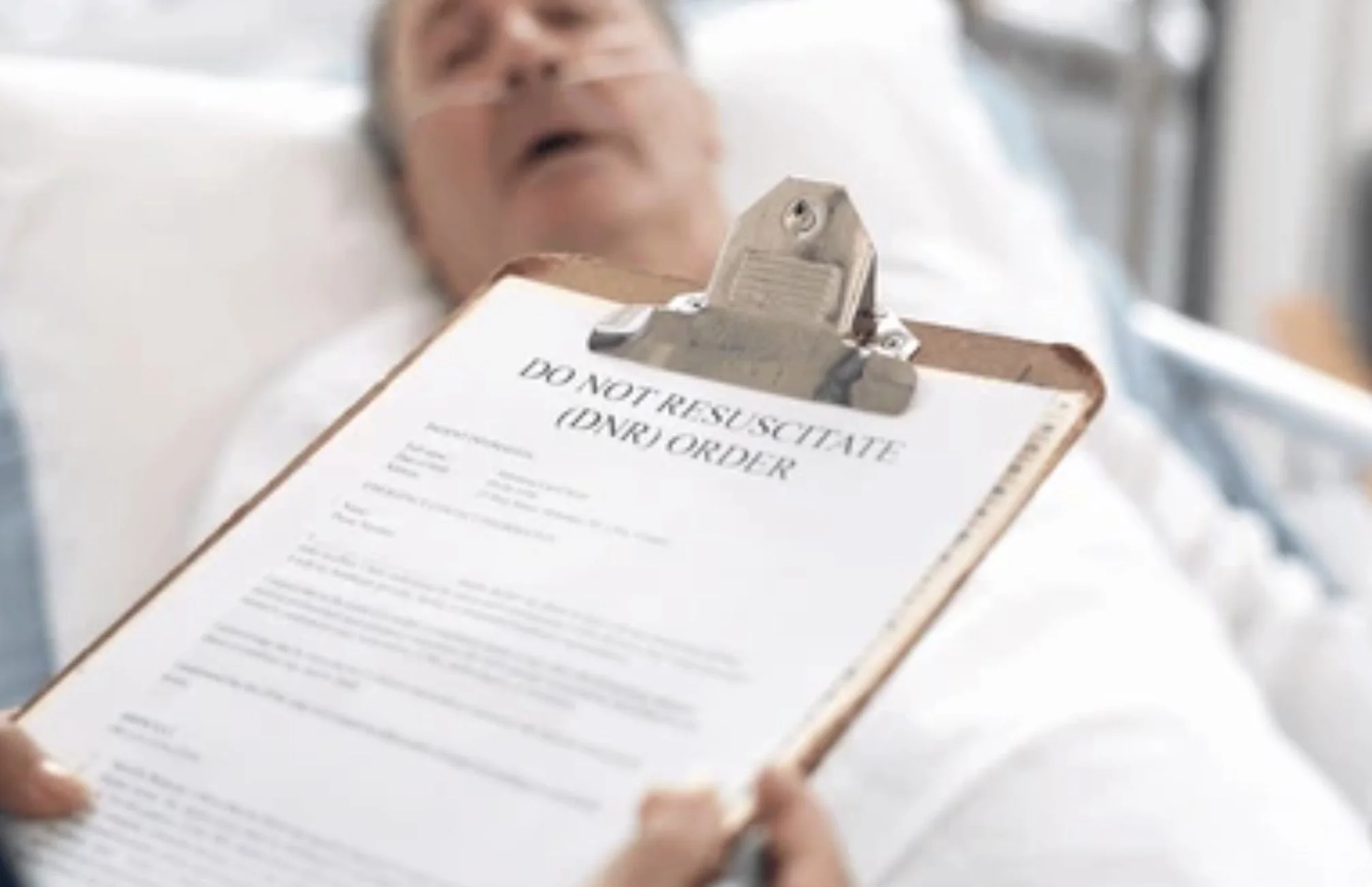What Is “Code Status” — and Why Would Someone Choose Not to Be “Full Code, Full Tube”?
Last Updated: November 2025
Medically Reviewed by Dr Jessica Knape, MD MA-Board Certified in Internal Medicine and Integrative and Holistic Medicine
Overview
“Code status” is a medical term that tells your healthcare team how far to go if your heart or breathing stops.
“Full code” means you want all life-saving measures (CPR, defibrillation, breathing tubes, ICU care).
Some people choose “Do Not Resuscitate (DNR)” or “Do Not Intubate (DNI)” when aggressive interventions would likely cause more harm than benefit, especially in advanced illness.
The goal is not “doing nothing” — it’s choosing comfort, dignity, and control over how you spend the end of your life.
What “Code Status” Really Means
Every adult admitted to a hospital is asked their code status — essentially, what you would want done in an emergency like:
Cardiac arrest (heart stops)
Respiratory failure (can’t breathe independently)
Your choice determines how the team responds if you become unresponsive.
Common Code Status Options
Full Code: All resuscitative measures are performed — chest compressions (CPR), electric shocks, breathing tube, mechanical ventilation, medications, and ICU-level care.
DNR (Do Not Resuscitate): No CPR or electric shocks if the heart stops. Comfort measures only.
DNI (Do Not Intubate): CPR may be attempted, but no breathing tube or mechanical ventilation if breathing fails.
Comfort-Focused / DNR–DNI: Focus entirely on symptom relief (oxygen, pain and anxiety control, natural passing without aggressive life support).
Why “Full Code, Full Tube” Isn’t Always the Best Choice
1. CPR in real life is very different from TV
On medical dramas, people often survive CPR and walk out of the hospital.
In real life, survival is much lower — especially for older or chronically ill patients.
Healthy adults (witnessed arrest in hospital): 20–25% chance of surviving CPR to discharge
Frail older adults: 5–10% chance of surviving CPR to discharge
Terminal illness (advanced cancer, dementia, heart failure): <1–2% chance of surviving CPR to discharge
Even if the heart restarts, many survivors have brain injury, fractures, or prolonged ICU stays requiring machines.
2. “Full tube” (intubation) can prolong suffering
Mechanical ventilation saves lives in reversible conditions (like pneumonia in a healthy adult).
But in advanced illness — cancer, dementia, end-stage heart or lung disease — it often:
Doesn’t change the underlying disease
Requires sedation and restraint
Prevents eating, speaking, or meaningful interaction
May lead to prolonged ICU dependency or death on a ventilator
This can extend the dying process without restoring quality of life.
3. It’s about values, not “giving up”
Choosing not to be “full code, full tube” means prioritizing comfort, connection, and control over invasive procedures with low success rates.
Many people prefer:
To die naturally, at home or in hospice
Surrounded by family, not ICU monitors
With pain and breathlessness managed
With dignity and autonomy intact
As one palliative care physician often says:
“A DNR doesn’t mean do nothing — it means do the right things.”
What “Comfort Care” Actually Includes
If someone chooses not to be full code, they still receive full medical attention focused on comfort:
Oxygen and breathing support (non-invasive)
Pain and anxiety management
Hydration and medications as tolerated
Emotional and spiritual support
Skilled nursing and palliative care oversight
How to Decide What’s Right for You
Talk with your doctor early — ideally before you’re hospitalized.
Ask: “What would CPR or a breathing tube look like for someone in my condition?”Reflect on your values.
What matters most — time, independence, comfort, or avoiding suffering?Use an advance directive or living will.
This documents your wishes clearly so your loved ones aren’t forced to guess.Appoint a medical durable power of attorney (DPOA).
This person can speak for you if you can’t communicate.Revisit your decision regularly.
Code status can change if your condition or goals change.
Common Misconceptions
Myth: “DNR means no care.”
Reality: You still receive full medical care focused on comfort and dignity.
Myth: Doctors will give up on me.”
Reality: The medical team honors your wishes and may continue treating reversible problems.
Myth: “I’ll lose control.”
Reality: Choosing a code status is control — it ensures your values guide care, not crisis.
Myth: “Only very old people need this.”
Reality: Everyone over 18 should document preferences, regardless of age.
A Realistic Perspective
Many patients choose “Full Code” when they’re healthy or early in illness.
As disease progresses, some shift toward “DNR/DNI — comfort-focused” because:
Aggressive interventions would not restore meaningful life
They want natural closure surrounded by loved ones
They prioritize quality over quantity of days
Having this conversation early — before a crisis — ensures decisions come from clarity, not panic.
Summary
“Code status” is not just a hospital checkbox — it’s a reflection of your values.
Full code means doing everything medically possible to restart life.
DNR/DNI or comfort care means focusing on quality, not prolonging suffering.
There’s no right or wrong choice — only what aligns with your goals, beliefs, and definition of a good life (and death).
At Healthspan Internal Medicine, these conversations are an act of precision compassion: ensuring care is both medically sound and personally meaningful.
Sources
American Heart Association. CPR Survival and Outcomes Data (2020 Guidelines Update).
Ehlenbach WJ, et al. Epidemiologic Study of In-Hospital CPR Outcomes. NEJM. 2009;361:22–31.
National Institute on Aging. Understanding Health Care Decisions at the End of Life.
Mayo Clinic Staff. Do-Not-Resuscitate Orders: What They Mean and How to Decide.
Colorado Department of Public Health & Environment. CPR Directive / DNR Forms.
Medically reviewed by
Dr. Jessica Knape, MD, MA Board Certified in Internal Medicine and Integrative and Holistic Medicine
Healthspan Internal Medicine — serving patients in Boulder, CO
Book a Discovery Call | About Dr. Knape
This content is for educational purposes and does not replace personalized medical advice.

